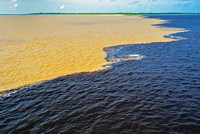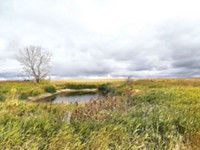Advertisement
Grab your lab coat. Let's get started
Welcome!
Welcome!
Create an account below to get 6 C&EN articles per month, receive newsletters and more - all free.
It seems this is your first time logging in online. Please enter the following information to continue.
As an ACS member you automatically get access to this site. All we need is few more details to create your reading experience.
Not you? Sign in with a different account.
Not you? Sign in with a different account.
ERROR 1
ERROR 1
ERROR 2
ERROR 2
ERROR 2
ERROR 2
ERROR 2
Password and Confirm password must match.
If you have an ACS member number, please enter it here so we can link this account to your membership. (optional)
ERROR 2
ACS values your privacy. By submitting your information, you are gaining access to C&EN and subscribing to our weekly newsletter. We use the information you provide to make your reading experience better, and we will never sell your data to third party members.
Environment
Nitrous Oxide Goes With The Flow
Greenhouse Gases: The Ohio River emits more nitrous oxide than predicted by current models
by Laura Cassiday
September 8, 2010

Atmospheric levels of nitrous oxide are rising, and scientists are trying to identify man-made sources of the potent greenhouse gas. Now researchers have shown that the Ohio River emits high levels of nitrous oxide that can be traced to microbial conversion of compounds in treated wastewater. Their findings suggest that current models underestimate nitrous oxide emissions from large rivers (Environ. Sci. Technol., DOI: 10.1021/es1016735).
Bacteria in soil and water produce nitrous oxide, an ozone-depleting compound with 300 times the global-warming potential of carbon dioxide, from nitrogen-containing compounds in fertilizers and human waste. Although researchers knew that aquatic systems emit nitrous oxide, "the vast majority of the work has been done in small streams because it's easy to get representative samples of sediments and water," says Jake Beaulieu, environmental scientist at the U.S. Environmental Protection Agency.
On the other hand, scientists knew very little about nitrous oxide emissions from deep, wide rivers such as the Ohio. So Beaulieu's team collected water and sediment samples from 29 sites along a 144-km stretch of the Ohio River that flows by the city of Cincinnati. Then, they analyzed total nitrous oxide emissions from the water's surface as well as nitrous oxide production by bacteria in water and sediments.
The researchers detected a spike in nitrous oxide emissions downstream of a wastewater treatment plant that discharges treated effluent directly into the river. "Not only did this effluent contain massive amounts of nitrous oxide produced in the treatment plant, but it also carried lots of ammonium into the river," says Beaulieu. Bacteria in the river convert ammonium into nitrous oxide.
Surprisingly, Beaulieu discovered an important difference between nitrous oxide production in small and large flowing waters. Whereas bacteria in sediments produce almost all of the nitrous oxide emitted from small streams and rivers, bacteria in the water column of the Ohio River produced twice as much nitrous oxide as those in the sediments. "In large rivers with deep water columns, a lot of material for bacteria to adhere to is suspended in the water," explains Beaulieu.
These findings suggest that global estimates of nitrous oxide emissions from streams and rivers are too low because "most of the models have assumed that all of the nitrous oxide production is occurring in the sediments, with none in the water column," Beaulieu says. He notes that a better approach for estimating global emissions would be to build mechanistic models that include site-specific characteristics, such as water depth and nitrogen sources.
"This paper establishes the importance of large rivers, particularly those receiving human waste effluent, as significant contributors of a potent greenhouse gas," comments William Richardson, aquatic ecologist at the U.S. Geological Survey.





Join the conversation
Contact the reporter
Submit a Letter to the Editor for publication
Engage with us on Twitter